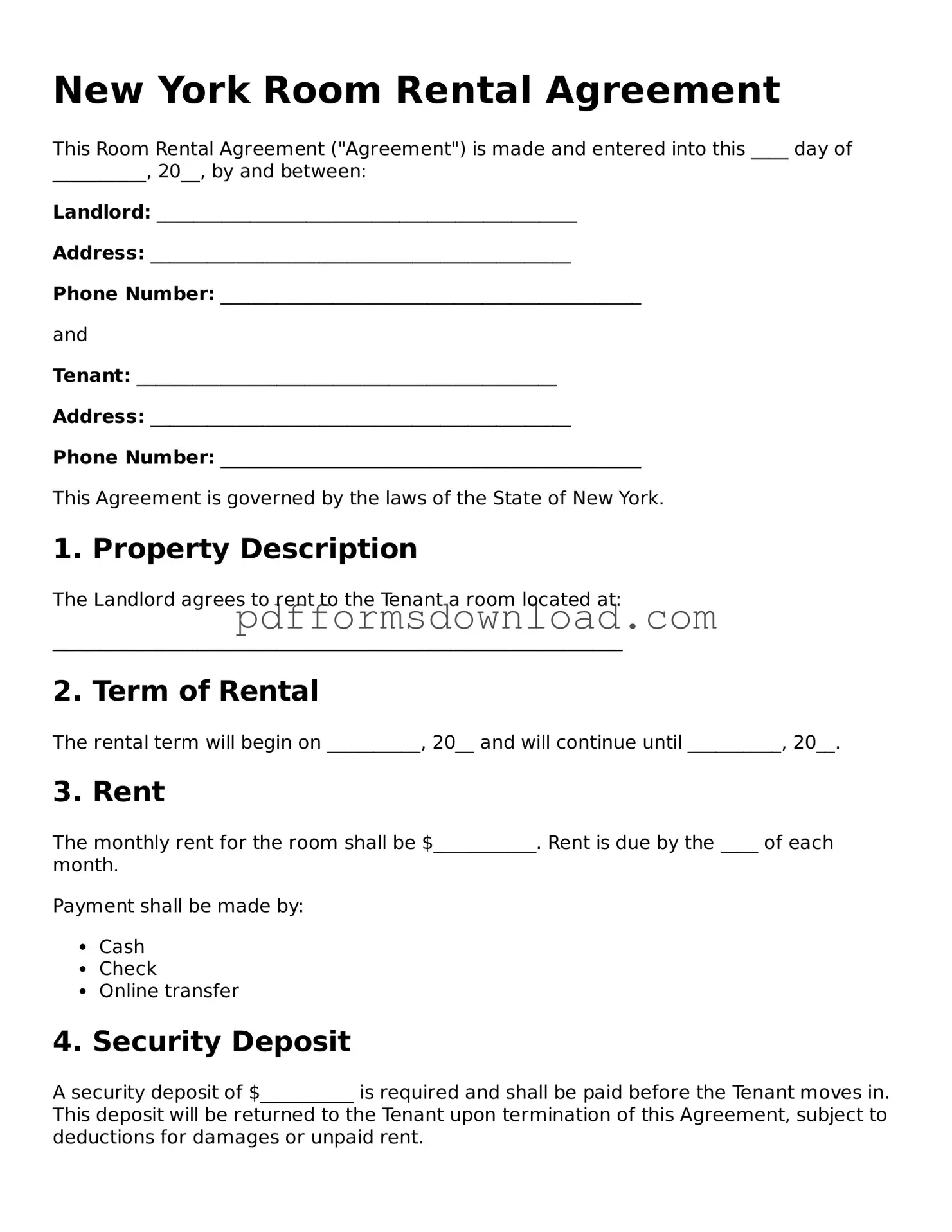What is a New York Room Rental Agreement?
A New York Room Rental Agreement is a legal document that outlines the terms and conditions between a landlord and a tenant for renting a room in a residential property. It serves to protect both parties by clearly defining their rights and responsibilities during the rental period.
What should be included in the Room Rental Agreement?
The agreement should include essential details such as the names of the landlord and tenant, the address of the rental property, the duration of the rental, the amount of rent due, and payment methods. Additionally, it should specify any security deposits, rules regarding shared spaces, and maintenance responsibilities.
Is a Room Rental Agreement required in New York?
How long is a Room Rental Agreement valid?
The duration of a Room Rental Agreement can vary. It may be set for a specific term, such as six months or a year, or it can be month-to-month. The agreement should clearly state the length of the rental period and any renewal options available.
Can the Room Rental Agreement be terminated early?
Yes, the agreement can often be terminated early, but the specific conditions for doing so should be outlined in the document. Typically, notice requirements must be met, and both parties should agree to any changes in the terms.
What happens if the tenant fails to pay rent?
If a tenant fails to pay rent on time, the landlord has the right to take action as specified in the agreement. This may include charging late fees or starting the eviction process. It's crucial for the agreement to detail the consequences of late payment.
Are there any laws specific to New York regarding Room Rental Agreements?
Yes, New York has specific laws that govern rental agreements, including rules about security deposits, tenant rights, and eviction processes. Familiarizing yourself with these laws can help ensure that the agreement complies with state regulations.
Can modifications be made to the Room Rental Agreement?
Modifications can be made, but they should be documented in writing and signed by both the landlord and tenant. This ensures that any changes are legally binding and recognized by both parties.
